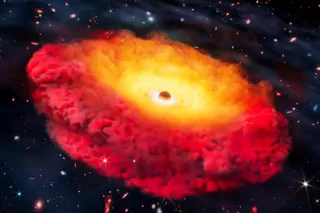A standard topic in an introductory General Relativity (GR) course is the study of maximally symmetric solutions. These are flat (Minkowski) spacetime, de Sitter spacetime (obtained when the cosmological constant is positive) and Anti-de Sitter spacetime (when the cosmological constant is negative). While this last space has been of great interest in physics during the last fifteen years due to its central role in the correspondence between gauge theories and gravity, it is de Sitter space with which I'll be concerned here.
The idea of cosmological inflation is our best developed idea of how the physics of the early universe might lead to the observed universe today. This idea has been widely discussed in popular books and beyond, and in this context, many students have heard the loose description that inflation occurs when the universe is in an almost de Sitter state, and undergoes exponentially rapid expansion. There is nothing ...













